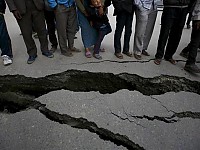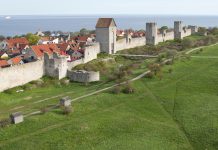
Historic monuments and infrastructure have been destroyed by the recent earthquake, halting tourism that accounts for 8% of Nepal’s economy.
In just a few seconds the powerful earthquake laid to waste a large area of Nepal. Reconstructing the impoverished Nepal’s ravaged economy will need a long slog, that will be financed by foreign-aid and money from home from around 2.2 million Nepalis working overseas.
Rajiv Biswas, Asia Pacific economist with HIS, forecasts that the total cost of reconstruction and restoration could be well above $5 billion or around 20% of Nepal’s economy. An early estimate by the United States Geological Service expects damages of between $1 billion and $10 billion dollars. Some of the other analysts say that it is too early to estimate the full cost of the damages.
According to the ADB (Asian Development Bank), tourism accounts for 8% of the economy and provides 7% of Nepal’s jobs. Last year approximately 800,000 tourists visited Nepal, a country that is home to 8 of the world’s fourteen tallest peaks, including 8,848 meter (29,029 foot) Mt. Everest, the world’s highest mountain. The earthquake, that occurred in the middle of Nepal’s tourism high-season and killed over 5,000 people, destroyed approximately 50% of the UNESCO World-Heritage sites that are located in Kathmandu and also triggered avalanches on Mt. Everest that killed nineteen people. It is the most recent setback for the tourism industry that suffered 2 tragedies in 2014.
Tourists are canceling their trips as governments (including the United States, through its State-Department travel advisories) advices that people avoid nonessential travel to Nepal.
Tourists are fleeing from Nepal due to the continuing aftershocks that have brought terror and fear. There is fear of the transmission of diseases due to the bodies that have not yet been buried and the lack of supplies and water.
According to UNESCO, UN’s cultural agency, 3 of the 7 World Heritage sites that are located in the Kathmandu Valley were damaged severely; this includes Durbar Square that has temples and pagodas dating from the 15th – 18th centuries.
Alok Bohara, who is the head of the Nepal Study Center at the University of New-Mexico (UNM), said that the damage done to the cultural-landmarks will have a substantial economic impact. Alok also said that a similar cultural reconstruction was done after another major quake that occurred in 1934, and it can be done again by expert artisans provided they are given adequate resources. This is extremely important because not only does the entire valley economy depend on the cultural icons, but also it will affect most of the activities that are related to tourism all across Nepal.
The economic fallout is centered in the densely-populated Kathmandu Valley. The devastation has been severe due to the fact that most of the homes were flimsily built.
The Nepalese government isn’t equipped to handle the relief efforts. Nepal is deeply-divided along political and ethnic lines and ranks as the world’s 126th most corrupt nation out of 174 countries, in a report by Transparency International. The United Nations ranks it 145th out of one hundred and eighty seven countries in its Human-Development Index, with an annual-per-capita income of only $712.
Biswas of HIS, said that the reconstruction will have to be funded mainly by other institutions and countries. The ADB has granted $3 million dollars for prompt relief and has pledged another $200 million dollars for the 1st reconstruction phase. The UN has appealed for $415 million dollars for essential needs in the next 3 months.










